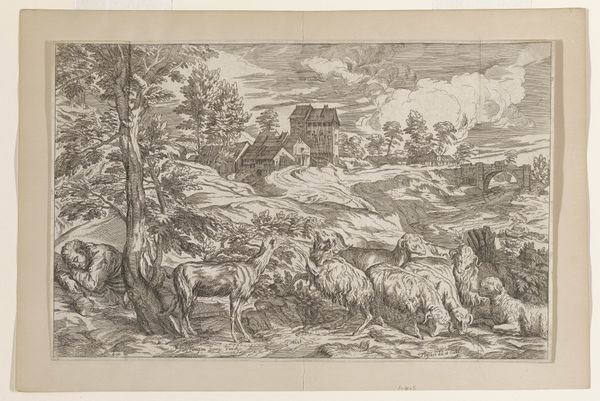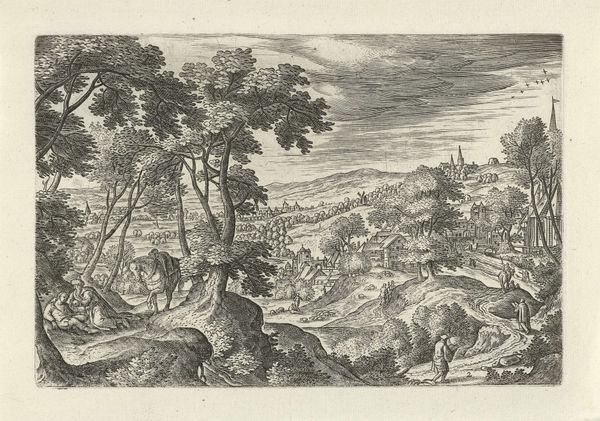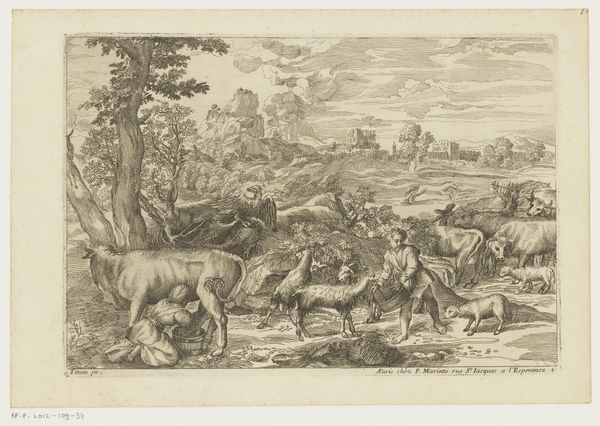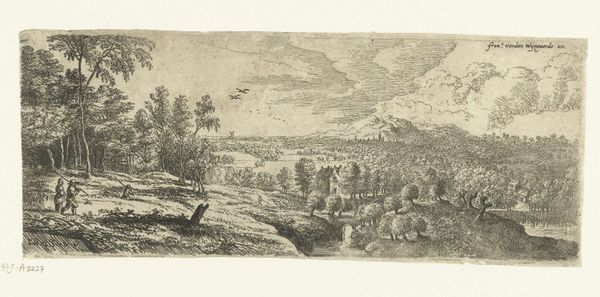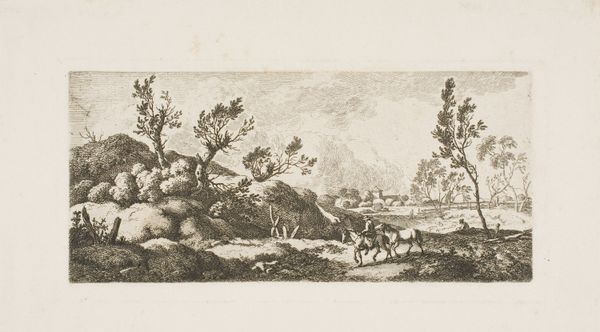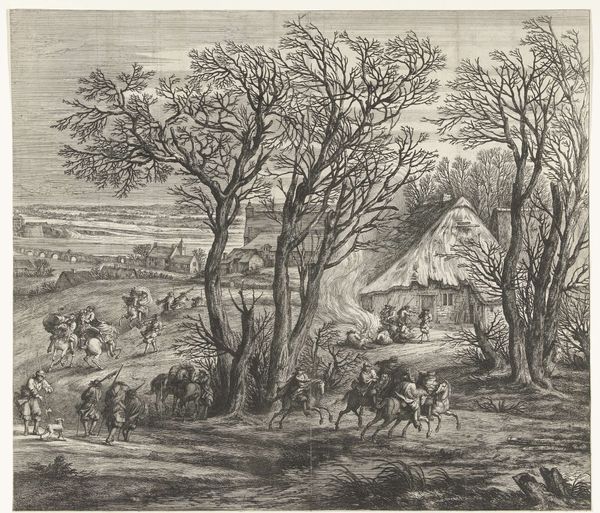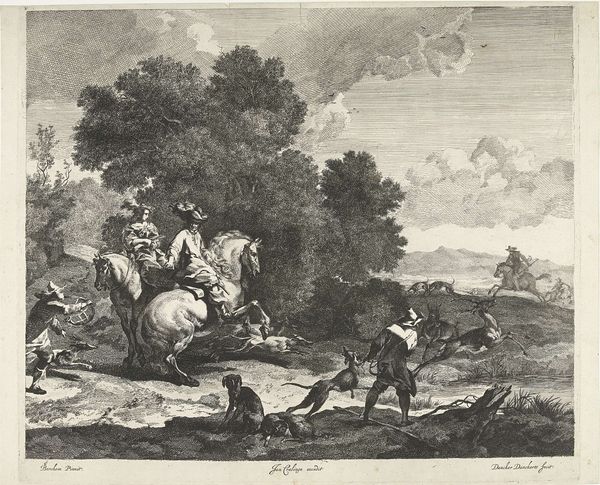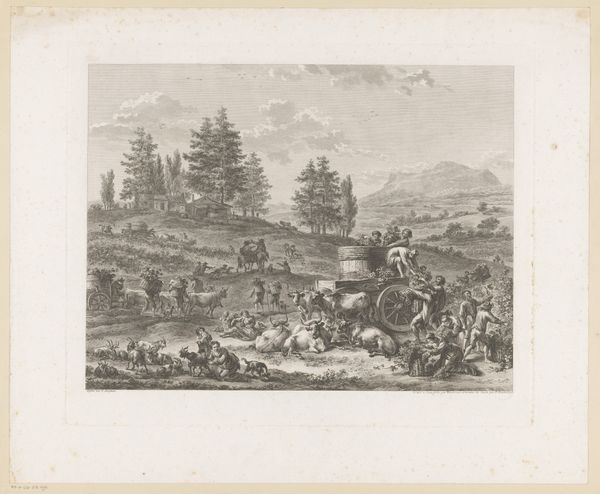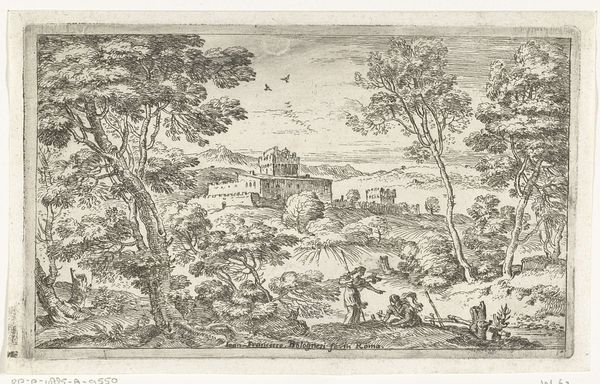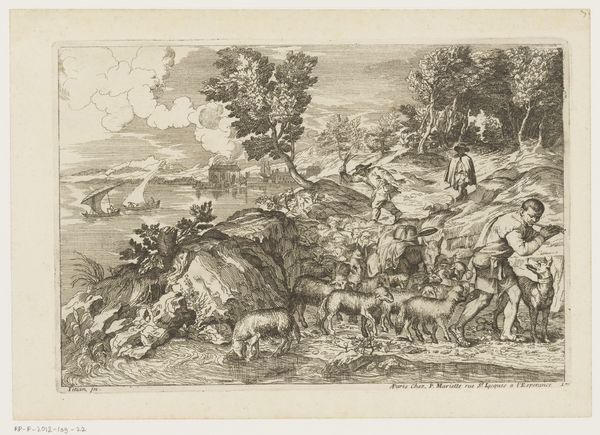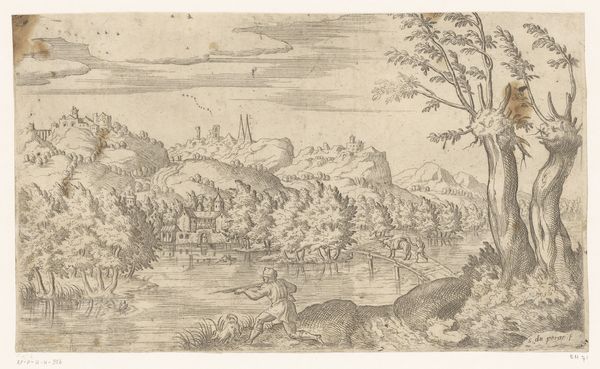
print, etching
#
baroque
#
dutch-golden-age
# print
#
pen sketch
#
etching
#
old engraving style
#
landscape
#
figuration
#
line
#
genre-painting
#
realism
Dimensions: width 399 mm, height 254 mm
Copyright: Rijks Museum: Open Domain
Curator: This etching is entitled "Landschap met slapende herder," or "Landscape with Sleeping Shepherd," created in 1682 by Valentin Lefebvre. Editor: The stark, almost dreamlike quality immediately grabs me. The pastoral scene, rendered in such precise lines, feels simultaneously idyllic and slightly melancholic. Curator: Indeed. Notice how Lefebvre manipulates line weight and density to create a sense of depth and volume. The foreground figures are meticulously detailed, while the background elements are suggested with a more delicate touch. Semiotically, it evokes a sense of carefully constructed observation, one meant to create both physical reality and a sense of distance. Editor: And what of the shepherd, asleep at the foot of the tree? Is he meant to represent a certain kind of vulnerability, of man yielding to nature? Perhaps Lefebvre is engaging with the idea of Arcadia, and also acknowledging the precarity of that fantasy, the ways such idealized existence always contains within it the seed of its own disruption. Curator: Interesting observation. One could also argue that the sleeping shepherd is a formal element used to offset the movement of the grazing animals. There's a beautiful stasis created by his prone form juxtaposed against the animal energies nearby. Editor: That stasis also contains a kind of implicit symbolism. The shepherd, guardian of the flock, is unable to attend to his duties. There is both peaceful rest, but also unfulfilled obligation. And look closely—the inclusion of the deer further disrupts the established pastoral narrative. The deer can represent solitude, awareness, or perhaps an intrusion by the outside world. The narrative isn’t so straightforward, and perhaps, never was. Curator: Well, perhaps it’s as simple as an etching capturing a momentary intersection. Lefebvre is masterful with contrasts: light versus dark, detail versus simplicity. Note, too, the technical achievement—the fineness of the lines, the subtlety of the gradations. It's an exquisite example of the etching process at its finest. Editor: In all, it's a quiet scene brimming with internal conflicts. Whether Lefebvre intended it or not, that tension reverberates, granting the artwork its persistent power and intrigue. Curator: Indeed. Through a study of formal qualities and thoughtful analysis, one cannot ignore the work’s symbolic language.
Comments
No comments
Be the first to comment and join the conversation on the ultimate creative platform.
